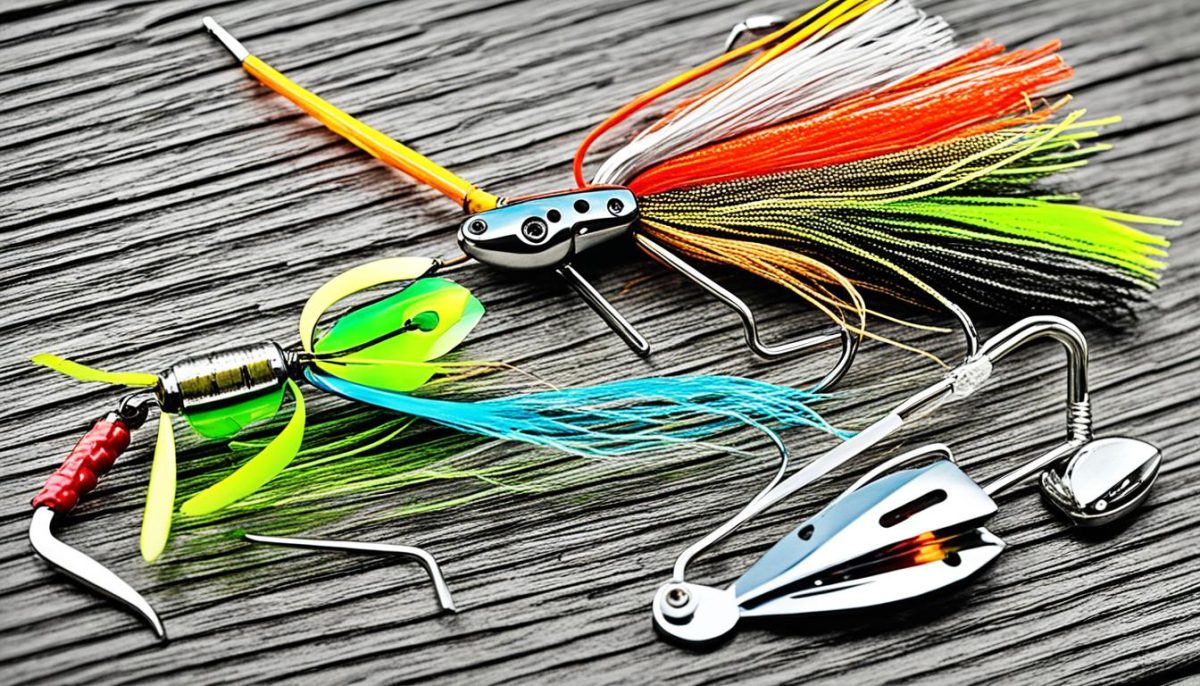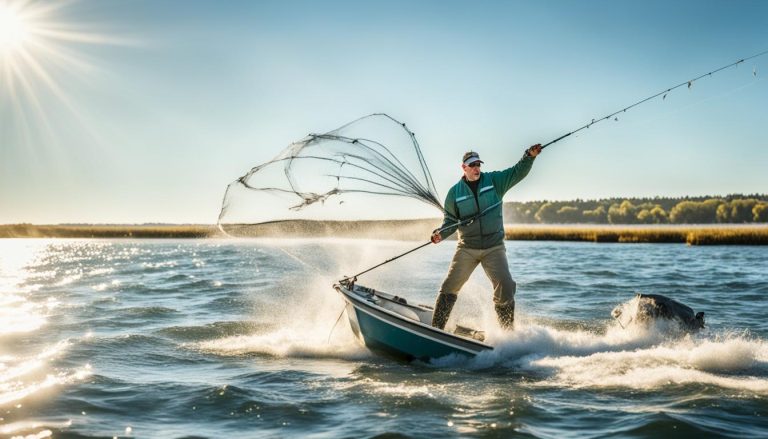Welcome, fishing enthusiasts and newbie anglers, to our step-by-step guide on how to tie a chatterbait and secure your lure like a pro!
Whether you’re just starting out or looking to enhance your fishing experience, mastering the art of tying a chatterbait is essential. In this article, we’ll provide you with detailed instructions on each step involved, ensuring that even newbies can feel confident in their knot-tying skills.
But first, let’s familiarize ourselves with the key components of a chatterbait. From the blade that adds irresistible vibration to the jighead that holds the hook, the skirt that provokes strikes, and the trailer that creates lifelike movements, understanding how these elements work together is vital to your success.
Now that you have a solid understanding of the components, it’s time to dive into our comprehensive guide. We’ll walk you through each step, from attaching the blade to securing the skirt and trailer, ensuring that your chatterbait is ready to entice those hungry fish.
Finally, we’ll share some insider tips and tricks to help you achieve chatterbait success. From different fishing techniques to effective retrieve methods, these insights will give you the edge in landing that prized catch.
So, gear up and get ready to become a chatterbait pro! Let’s start with the basics—tying a chatterbait securely. You’ll be amazed at the difference it makes in your fishing adventures.
Understanding the Chatterbait Components
Before diving into the tying process, it’s crucial to have a clear understanding of the various components that make up a chatterbait. Each individual element plays a significant role in attracting fish and increasing your chances of a successful catch. Let’s take a closer look at the key components:
The Blade
The blade, often referred to as the heart of the chatterbait, is responsible for creating the fish-attracting vibration and flash. It comes in various shapes and sizes, including willow, Colorado, and blade combinations. Experimenting with different blade types can help you determine what works best for the specific fishing conditions and the fish you are targeting.
The Jighead
The jighead is the weighted portion of the chatterbait and provides the necessary balance and stability for the lure. It features a hook that secures the trailer bait and ensures it stays in place during retrieval. Jigheads come in different weights and sizes, allowing you to customize your chatterbait based on the depth and conditions of your fishing spot.
The Skirt
The skirt is a vital component of the chatterbait that mimics the appearance of baitfish or other underwater prey. It is usually made of silicone or rubber strands that create a lifelike movement in the water. Experimenting with different colors and patterns can help you imitate the preferred food source of your target species.
The Trailer
The trailer is the additional bait or soft plastic lure attached to the chatterbait. It enhances the overall profile and action of the lure, making it more enticing for fish. Popular trailer options include paddle tails, crawfish imitations, and creature baits. The choice of trailer depends on the type of fish you are targeting and the prevailing fishing conditions.
Understanding the various components of a chatterbait is essential for effective lure selection, customization, and overall fishing success. Now that we have covered the key components, let’s move on to the step-by-step process of tying a chatterbait in the next section.

Step-by-Step Guide to Tying a Chatterbait
Are you ready to take your fishing game to the next level? Learning how to tie a chatterbait is a crucial skill for any angler looking to secure their lure and maximize their chances of a successful fishing trip. In this step-by-step guide, we will walk you through the process of tying a chatterbait with ease and precision.
Step 1: Attach the Blade
The first step in tying a chatterbait is attaching the blade. Start by threading the blade onto the wire shaft, ensuring it sits snugly against the jighead. This will guarantee that the blade creates the enticing vibration that attracts fish.
Step 2: Secure the Skirt
Next, it’s time to secure the skirt onto the chatterbait. Take your chosen skirt color and slide it onto the jighead, positioning it just above the blade. Make sure the skirt is centered and covers the jighead completely. For added durability, you can use a small drop of super glue to hold the skirt in place.
Step 3: Add a Trailer
Adding a trailer to your chatterbait can enhance its appeal and entice fish to strike. Choose a trailer that matches the color and size of the baitfish in your fishing area. Thread the trailer onto the hook, ensuring it sits straight and securely. This will create a lifelike movement in the water, increasing your chances of a bite.
And there you have it! By following this step-by-step guide, you can confidently tie a chatterbait and secure your lure like a pro. Remember to practice these steps multiple times to perfect your technique and ensure a successful fishing experience.

Now that you’ve mastered the art of tying a chatterbait, it’s time to hit the water and put your new skills to the test. Stay tuned for our next section, where we’ll share some expert tips and tricks for chatterbait success, including fishing techniques and retrieve methods that will help you land the prized catch of your dreams.
Tips and Tricks for Chatterbait Success
When it comes to chatterbait success, mastering the right fishing techniques can make all the difference. Firstly, it’s important to choose the right size and color of chatterbait for the conditions you’re fishing in. Bright colors like chartreuse or white work well in murky waters, while natural colors like green pumpkin or brown suit clear waters.
In terms of retrieve techniques, experimenting with different speeds and cadences can entice fish to strike. Start with a steady retrieve, then pause occasionally to mimic injured prey. Varying your retrieve can trigger the curiosity of nearby fish and potentially lead to more bites.
Another effective technique is to fish chatterbaits around cover, such as weed beds, submerged logs, or rock formations. Targeting areas where fish are likely to be hiding increases your chances of success. Additionally, incorporating short pauses or jerks during your retrieve can imitate a baitfish darting and attract predatory fish.
Lastly, don’t be afraid to experiment with different trailers. Adding a soft plastic trailer, such as a swimbait or craw, can enhance the action of your chatterbait and make it even more enticing to fish. Remember to match the color and size of the trailer to the chatterbait for a seamless presentation.




